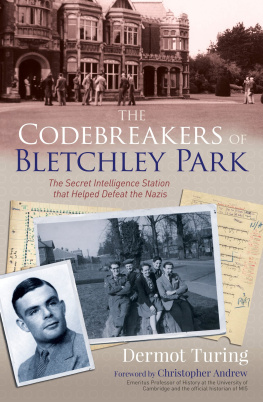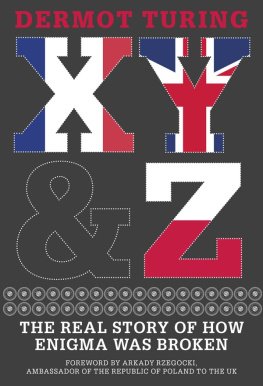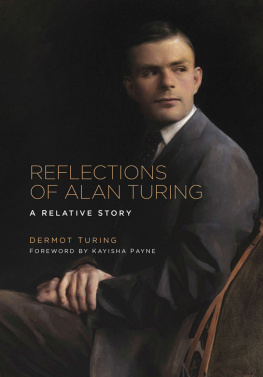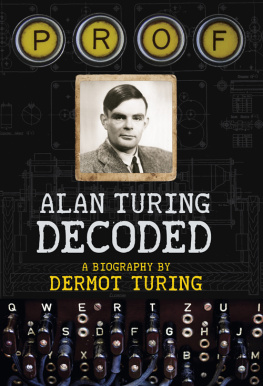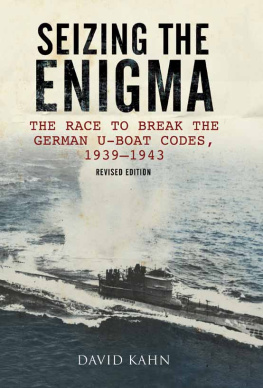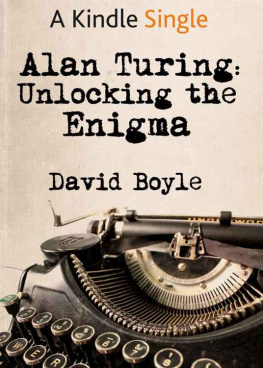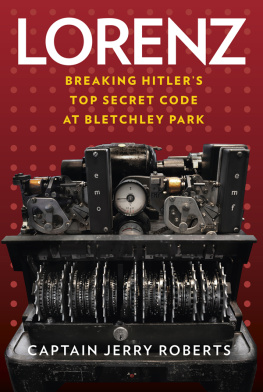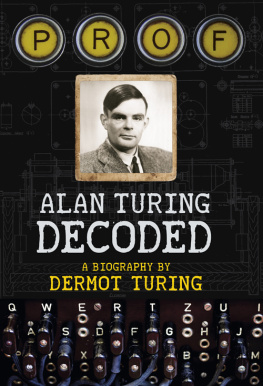John Dermot Turing - The Enigma Story: The Truth Behind the Unbreakable World War II Cipher
Here you can read online John Dermot Turing - The Enigma Story: The Truth Behind the Unbreakable World War II Cipher full text of the book (entire story) in english for free. Download pdf and epub, get meaning, cover and reviews about this ebook. year: 2022, publisher: Sirius, genre: History. Description of the work, (preface) as well as reviews are available. Best literature library LitArk.com created for fans of good reading and offers a wide selection of genres:
Romance novel
Science fiction
Adventure
Detective
Science
History
Home and family
Prose
Art
Politics
Computer
Non-fiction
Religion
Business
Children
Humor
Choose a favorite category and find really read worthwhile books. Enjoy immersion in the world of imagination, feel the emotions of the characters or learn something new for yourself, make an fascinating discovery.
- Book:The Enigma Story: The Truth Behind the Unbreakable World War II Cipher
- Author:
- Publisher:Sirius
- Genre:
- Year:2022
- Rating:4 / 5
- Favourites:Add to favourites
- Your mark:
The Enigma Story: The Truth Behind the Unbreakable World War II Cipher: summary, description and annotation
We offer to read an annotation, description, summary or preface (depends on what the author of the book "The Enigma Story: The Truth Behind the Unbreakable World War II Cipher" wrote himself). If you haven't found the necessary information about the book — write in the comments, we will try to find it.
The Enigma cipher was supposed to be the Germans impenetrable defence for its military communications against prying eyes during World War II. All manner of secrets were entrusted to it. When the Allies finally managed to crack the code, it heralded a turning point in the war.
This is the fascinating story of how the code was created, adopted by the Nazis, and finally broken. Dermot Turing, the nephew of the great codebreaker Alan Turing, explores the twists and turns of German encryption efforts from the end of World War I through to Hitlers demise and the great lengths to which the Allies went to break it.
The Enigma Story reveals the efforts of the codebreakers at Bletchley Park, the machines called bombes specially designed to break it, and the vast resources devoted in America to decrypting German messages. From the cloak-and-dagger heroics of men like Hans-Thilo Schmidt and Gustave Bertrand to the brilliant mathematical discoveries of men like Henryk Zygalski and Dilly Knox to the fraught decision-making of Allied High Command, the battle for the code was at the heart of the Allied victory in World War II.
This extraordinary tale of intrigue, ingenuity and courage brings to life the complete story of the Enigma in a lively and entertaining narrative.
John Dermot Turing: author's other books
Who wrote The Enigma Story: The Truth Behind the Unbreakable World War II Cipher? Find out the surname, the name of the author of the book and a list of all author's works by series.


